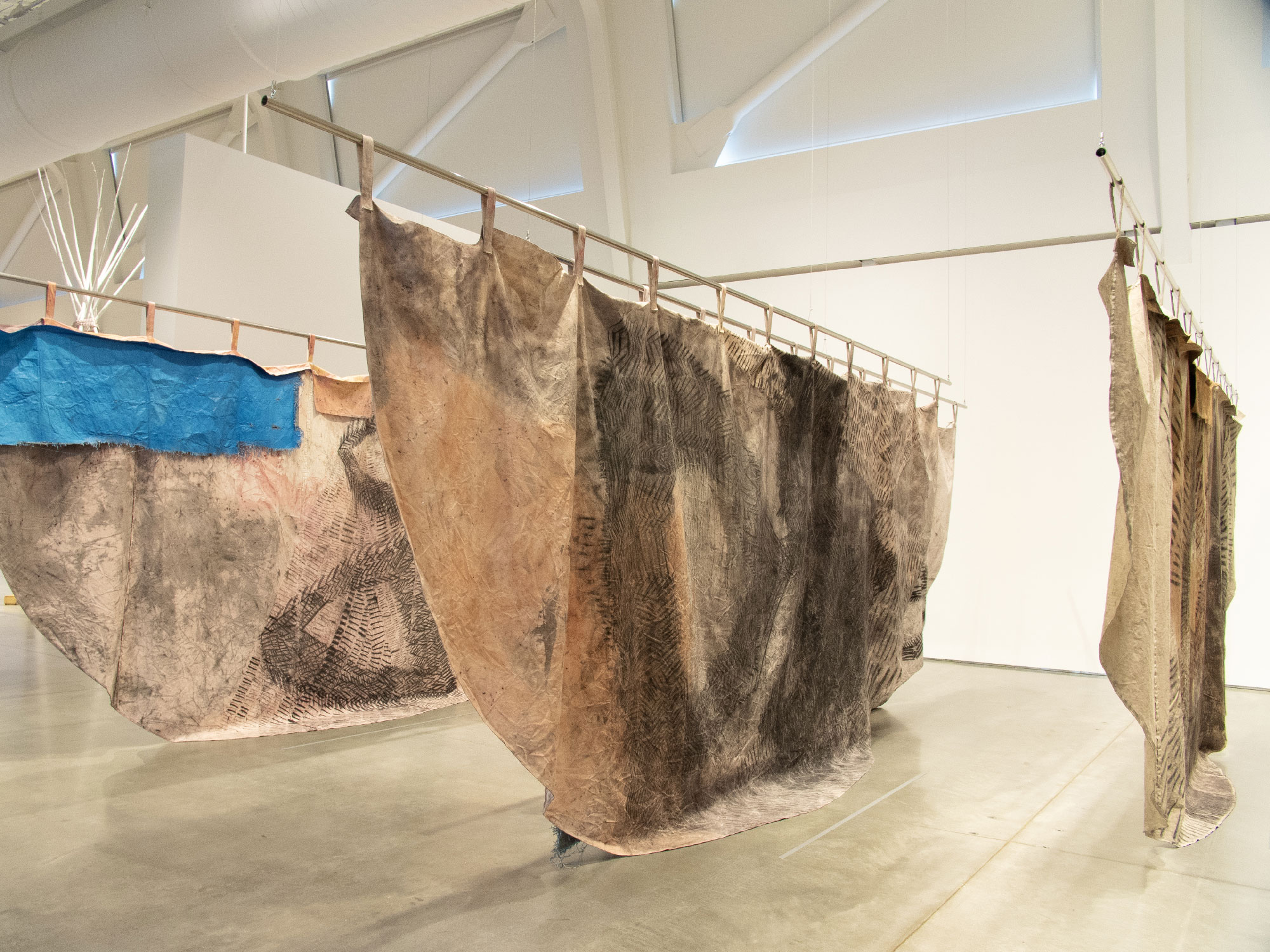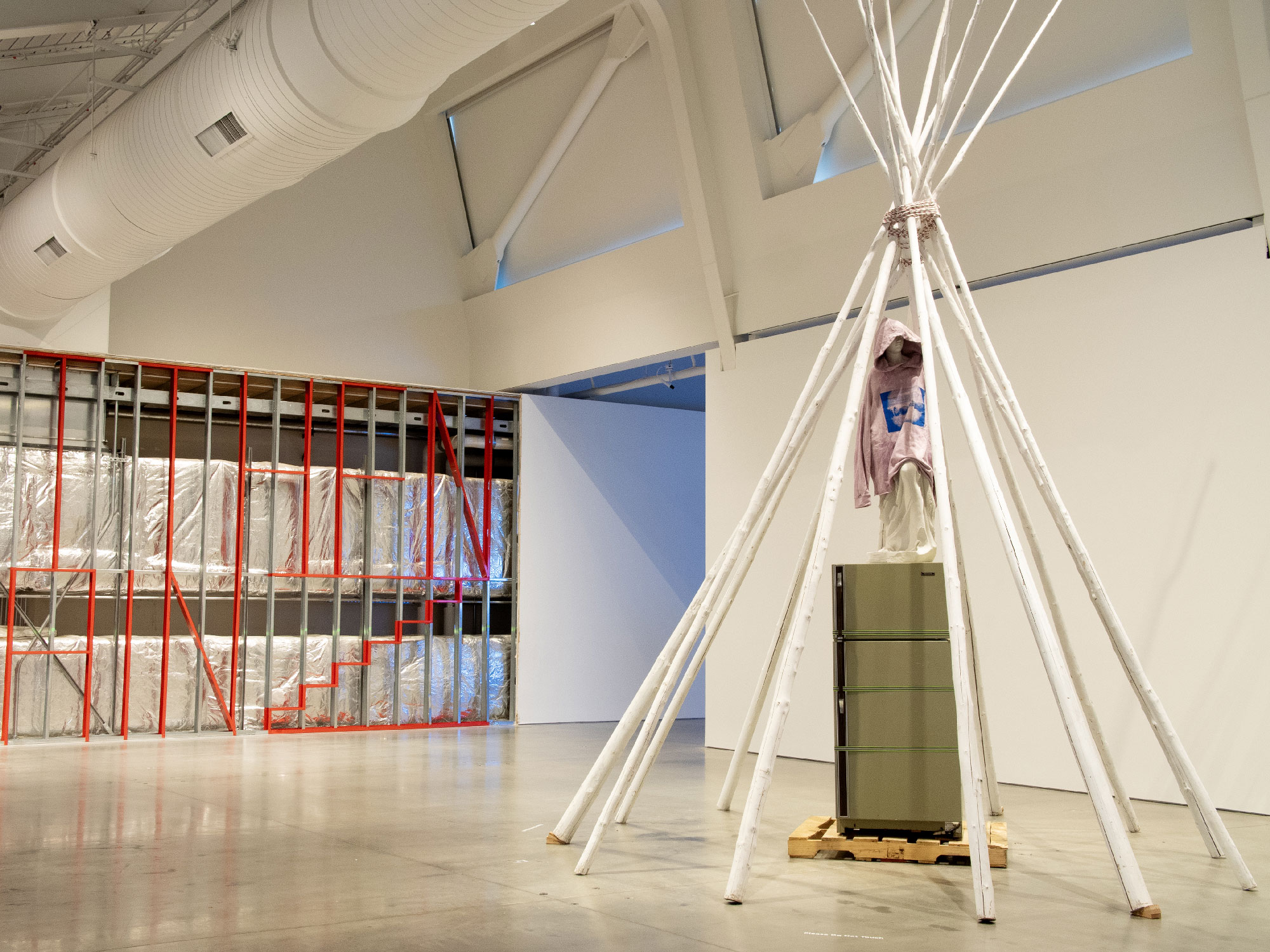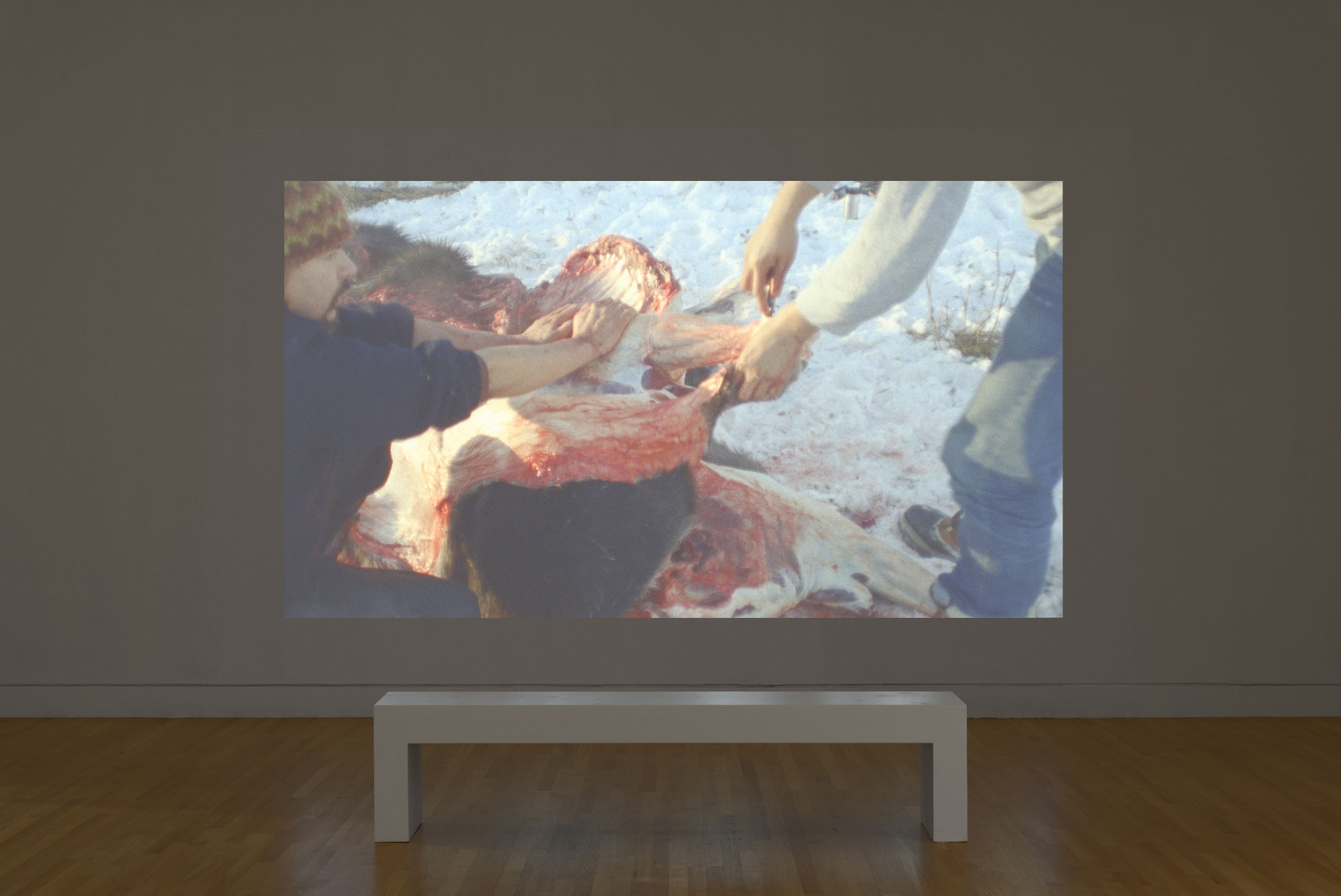When you first turn into the Berkeley Art Museum and Pacific Film Archive’s main exhibition space, watch your head. Jutting out from the wall sideways, in a splay of tapered wooden pole-ends, is a massive tepee — or at least the bones of one. The sumac-dyed canvas that might otherwise enfold the structure drapes over one side. What remains are the poles, knotted together near their tips and painted a streaky, ashen white.
The effect is twofold: The tepee, that endlessly appropriated icon of pastoral Indigenous life, is disentangled from any cutesy, passive conception. This one could snag you, if you’re not careful. And its exposed frame, sapped of color, becomes skeletal. Something has died. Don’t you remember?
Duane Linklater, the Omaskêko Cree artist behind this piece, titled dislodgevanishskinground, is deeply interested in the memory of things. For much of the past two decades, he has created art focused on the jagged edges where Indigenous and non-Native life meet, which is to say he has focused on the ways we have scrubbed clean our national memories to forget that these collisions took place, at one time or another, everywhere. (Linklater is from Northeastern Ontario, in Canada.) For Linklater, the story of colonialism’s bloody expansion — and the memory of all that it snuffed out — is buried deep in the objects we handle and the places we occupy every day.

mymothersside, BAMPFA’s survey of Linklater’s work from the last decade, serves as an excavation of these memories. It includes some 30 pieces in sculpture, painting and film, as well as one permanent architectural installation. Linklater composed almost all of the works from materials important to his and other Native cultures: animal hides, saplings, sumac, cochineal and charcoal. (These material choices render one major outlier — a series of colorless 3D-printed replicas of Indigenous artifacts from the Utah Museum of Fine Arts in Salt Lake City — utterly lifeless by comparison).
The exhibition debuted at Seattle’s Frye Museum in 2022, followed by a stint at the Museum of Contemporary Art Chicago. But BAMPFA’s version is the largest yet, with room enough for a dynamic installation seen only once before, at the 2022 Whitney Biennial.
That piece, titled wintercount_215_kisepîsim, mistranslate_wolftreeriver_ininîmowinîhk, involves six painted tepee-canvas rounds hung from metal rods, which themselves hang some eight feet high via steel cables attached to the ceiling. The covers, stained with blueberry, orange pekoe tea and other natural dyes, drape downward in semicircles, gently bunching on the floor. Visitors are invited to walk between them — an enveloping warmth against the museum’s sterile white walls.
Linklater has said he intends for this installation to be rearranged over the course of the exhibition, a reference to the flexibility of the tepee covers as a form of portable architecture. But in concert with the show’s other works, the choice also reflects a desire for audiences to meet the art on ethnographic as well as aesthetic terms. In this way the covers are more than sculptural objects in the formalist sense; they serve a practical and ritual purpose — they evince a history. To treat them accordingly prevents the museum from obscuring this essential fact for its visitors, and thus from perpetuating an erasure in which museums generally have played an outsize role.

And in case this institutional duty was unclear, mymothersside includes a brasher approach. Linklater’s installation What Then Remainz required BAMPFA to deconstruct the exhibition’s far wall, stripping it to its metalwork and insulation. The museum had to then rearrange the steel framing and use red acrylic paint to spell out the titular phrase, borrowed from a controversial United States Supreme Court decision determining the jurisdiction of tribal lands. When the exhibition is over, drywall will be reapplied over the framing, leaving the phrase in place indefinitely.
I had seen this piece before, constructed for previous shows (at least three museums contain the inscription). Not knowing better, I expected the rest of Linklater’s exhibition to be as pugilistic, fueled by the sort of righteous fury that inflames the work of other artists preoccupied by legacies of colonial violence, like Kara Walker or Jaune Quick-to-See Smith.
But mymothersside is almost unwaveringly tranquil. Look at Modest Livelihood, a silent, 50-minute documentary film playing on a loop in a darkened corner of the exhibition. The title is a response to a 1999 Canadian Supreme Court ruling that Indigenous people can only fish enough food to sustain a “moderate livelihood” — a preposterous restriction that Linklater counters not with fiery indignation, but with serenity.

The film follows Linklater, Dane-zaa artist Brian Jungen, and Dane-zaa elder Jack Askoty on a moose hunt in tribal territory of northern British Columbia. The camera keeps mostly on the men’s backs, drifting lazily to capture rustling trees or sunlight blinking through grass. One minute-and-a-half long landscape shot — a spray of carmine shrubs breaking on a yellow-green treeline that sweeps clear back to the Rockies — nearly brought me to tears. The image conveyed a profound reverence for the land. It suggested an artist who had determined that in the face of punishing indifference, one antidote may simply be to care.

‘mymothersside’ is on view at the Berkeley Art Museum and Pacific Film Archive through Feb. 24, 2024.